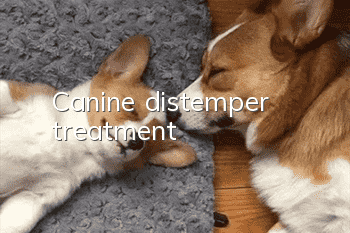Canine distemper treatment

The treatment methods for canine distemper generally include inhibiting virus reproduction, controlling secondary infections and symptomatic treatment. Among them, drugs such as canine distemper monoclonal antibody and canine interferon are mainly used to inhibit virus reproduction; drugs containing ingredients such as amoxicillin and clavulanate potassium and cefotaxime are mainly used to control secondary infections. At the same time, symptomatic treatment is also required. For example, when a serious secondary eye infection occurs, eye drops containing ingredients such as lysozyme and neomycin can be used. It is recommended that owners take their dogs to the pet hospital for treatment in time after they are infected with canine distemper virus. The sooner the dog is treated, the greater the chance of recovery.
The treatment methods for canine distemper are different at different stages of the disease. For specific treatment methods, please refer to the following points.
Early stage of canine distemper
In the early stage of canine distemper, dogs need to be treated with antiviral drugs such as interferon and monoclonal antibodies. At the same time, the dog is given oral antibiotics such as amoxicillin and doxycycline to prevent secondary bacterial infections. In addition, symptomatic treatment is required. For example, when a dog has a high fever, it needs to be injected with an antipyretic injection. If symptoms such as vomiting and diarrhea occur, the dog needs to be given oral antivomiting and antidiarrheal drugs. In addition, attention must be paid to replenishing the body with water and nutrients to prevent severe dehydration.
Mid stage of canine distemper
In the middle stage of canine distemper, dogs often have clinical symptoms of the respiratory tract, digestive tract, and even pneumonia. Condition. At this time, it is also necessary to give the dog oral medications to relieve cough, asthma, vomiting and diarrhea to improve the symptoms of the respiratory tract and digestive tract, and use immune globulin to enhance the dog's immunity.
Later stage of canine distemper
If the owner does not treat the dog in time, as the disease progresses, the dog may reach the late stage of canine distemper. Nervous symptoms such as convulsions and foaming at the mouth may occur. At this time, the chance of cure is very low. Symptomatic treatment is generally adopted. Antiviral drugs, neurological drugs, vitamins and other drugs are used to control the dog’s neurological symptoms, fight against viruses, and enhance the dog’s immunity, and try to prolong it as long as possible. Dog life. However, most of these sick dogs have a poor prognosis, and even if they are cured, they may still have sequelae of convulsions.
Note: Canine distemper is a severe infectious disease with a very high mortality rate, especially for puppies, which is close to 80%. Therefore, it is recommended that once the owner finds that his dog is suffering from canine distemper virus, he should take him to the pet hospital for treatment as soon as possible. The sooner the dog is treated, the faster the dog can recover.Get healthy again. If you wait until the late stages of canine distemper to seek medical treatment, it may lead to a poor prognosis or death of the dog.
- How to train a Doberman Pinscher
- Will rabies bark like a dog? This is the truth!
- What should I do if my Poodle has indigestion after eating too much?
- Dog hair care
- What are the common diseases of dogs? Prevention is the most important!
- Training your dog’s swimming skills
- What should I do if my dog’s stomach is not digested? Can I feed my dog stomach and digestive tablets?
- What are the symptoms of calcium deficiency in dogs?
- What kind of dog is suitable for a first-time dog owner? The best dog for a novice!
- Dog status training in the home



